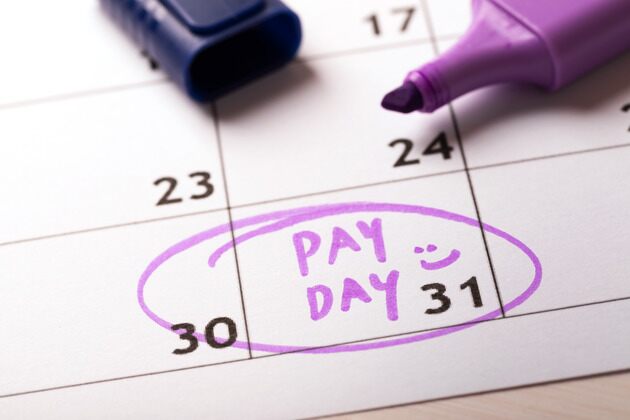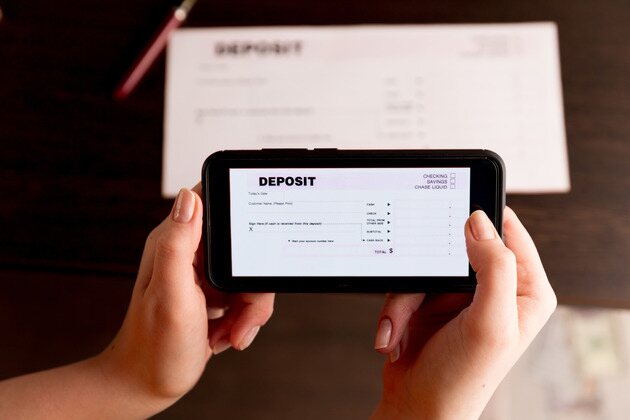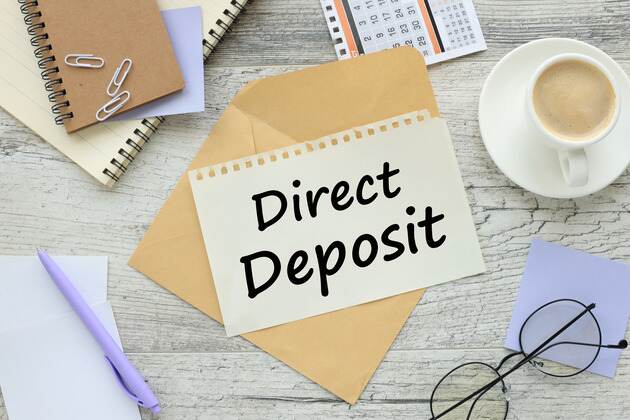Just as a well-planned itinerary makes for a stress-free trip, direct deposit makes payroll a breeze.
Direct deposit is a secure and convenient way to pay your employees. It removes the need for paper checks and guarantees your team receives their hard-earned money on time.
In this article, we’ll walk you through everything you need to know about how to do a direct deposit. This includes everything from choosing a provider to getting your employees on board.
What Is Direct Deposit?
Before understanding how to set up direct deposit, it’s essential to understand what it means. Direct deposit electronically transfers funds from an employer or company bank account directly into employees’ bank accounts on payday. Instead of receiving a physical check that has to be cashed or deposited, employees automatically receive the money in their checking or savings accounts.
Direct deposit is increasingly popular among businesses of all sizes for many reasons:
- It eliminates the need for paper checks. This saves time and money on printing and distribution.
- It’s much more secure than traditional paper checks. There’s no risk of checks being lost or stolen.
- Employees appreciate the convenience of having their pay automatically deposited into their accounts. There’s no need to visit a bank or wait for a check to clear.
With these benefits, it’s easy to see why many companies and their employees prefer this payment method.
FROM ONE OF OUR PARTNERS — What Is the Difference Between Gross and Net Pay?
Understanding How Direct Deposits Work

Now that you know what direct deposit is, understanding the direct deposit payroll process will help you set it up without any issues to make sure your employees get paid on time.
To start a direct deposit, you need to give your bank or payroll provider some important information. This includes your employees’ names, bank account details, and the amount of money you want to pay them.
After you give your bank or payroll provider the information, they’ll communicate with the Automated Clearing House (ACH) network. The ACH network is like a messenger between your bank and your employees’ banks. It makes sure payment information is sent safely and quickly.
Once the ACH network has all the payment information, it lets your employees’ banks know to deposit the money into their accounts. This last step usually takes a couple of business days, depending on the banks involved. By understanding these steps, you can plan when to run payroll and let your employees know when they can expect their direct deposits.
RELATED ARTICLE — How to Price Subcontract Work
Direct Deposit Costs
Although the convenience has some powerful benefits for your business and employees, it’s essential to understand how much it costs to set up direct deposit. This way, you can plan ahead and make sure it fits into your budget.
Some banks or payroll providers might charge a setup fee to get started with direct deposit. This is a one-time cost that covers getting everything ready to go. The amount varies depending on who you work with, so ask about setup fees when you choose a bank or payroll provider.
Another cost to keep in mind is the transaction fee. This is a small amount you may have to pay every time you send a direct deposit to an employee. The transaction fee varies based on your bank or payroll provider. Some charge less if you make a lot of transactions, so it’s a good idea to ask about this, too.
Even with these costs, direct deposit can save you money in the long run compared to using paper checks. When you use direct deposit, you don’t have to spend as much time or money on printing, mailing, and handling checks. This can add up to big savings for your business over time.
What You’ll Need To Set Up Direct Deposit for Employees
Before you can set up direct deposit for your employees, gather any important information and documents. Having everything ready will simplify the process and help you avoid delays.
Here’s what you’ll need:
- Your Business Bank Account Information. Start by providing your account number and your bank’s routing number. This is where the money for your employees’ paychecks will come from.
- Employee Information and Authorization. Employees who want to use direct deposit need to fill out a form giving the employer permission to send their pay to their bank account. They’ll also need to provide personal information like their name, address, and Social Security number.
- Employee Bank Account Details. Your employees need to give you their bank account numbers and bank routing numbers. This tells you where to send their pay. It’s vital to double-check this information to make sure the money goes to the right place.
- A Payroll Provider or Software. To process direct deposit, you’ll need to work with a payroll provider or use payroll software. This helps you send the payments to your employees’ banks securely and on time.
Once you’ve gathered all this information and chosen a payroll provider or software, you can start setting up direct deposit payments.
How To Set Up Direct Deposit

Learning how to send a direct deposit is simple once you break it down. Here’s a step-by-step guide:
1. Choose a Payroll Provider or Software
Look for a payroll provider that’s easy to use and has good customer support in case you have any questions. Make sure they can handle the number of employees you have and that their fees fit your budget.
2. Complete the Setup Process
Once you’ve chosen a provider, you’ll need to finish setting things up with them. This usually means filling out some paperwork and giving them your business bank account information.
3. Gather Information From Your Employees
Next, you’ll need to get some information from your employees. Have them fill out a direct deposit authorization form and provide their bank account details. Keep this information safe and secure.
4. Create a Payment Schedule
Decide how often you want to pay your employees (weekly, every two weeks, or twice a month) and pick what works best for your business. Let your employees know about the payment schedule and when they can expect their direct deposits to start.
5. Process Your First Direct Deposit
Now that everything is set up, you’re ready to process your first direct deposit. Your payroll provider or software will walk you through the steps. Make sure to double-check all the information before submitting the payments. Once the money is sent off, your employees will get their pay directly in their bank accounts by the scheduled date.
RELATED ARTICLE — Start Your Jobs Faster with Joist Deposits
The 4 Biggest Benefits of Direct Deposit for Your Employees

Direct deposit isn’t just a great choice for your business—it also offers a ton of benefits for your employees. Here are some of the top reasons why your employees will love getting paid through direct deposit:
- It’s Convenient. With direct deposit, your employees don’t have to worry about going to the bank to cash checks or wait for them to clear. The money goes straight into their accounts on payday, so they can access it right away. This saves them time and hassle. Plus, they don’t have to worry about losing a check or forgetting to deposit it.
- It Makes Payday More Predictable. When you use direct deposit, your employees know exactly when they’ll get paid. They don’t have to wonder if their check is in the mail or if they’ll have to wait a few extra days to get their money. This can help them better plan their finances and feel more secure about their income.
- It’s Easy To Set Up and Use. Once your employees give you their bank account information, they don’t have to do anything else to get paid through direct deposit. And if they ever need to update their bank account information or split their pay between multiple accounts, it’s usually a simple process they can handle online or with a quick form.
- It’s More Secure Than Paper Checks. Paper checks can get lost in the mail, stolen, or even forged. With direct deposit, there’s no physical check to worry about. The money goes straight from your business account to your employees’ accounts, so there’s less risk of fraud or theft.
Make Collecting Payments the Most Efficient Part of Your Business
Just as direct deposit simplifies the process of paying your employees, Joist makes it incredibly easy to accept credit card payments from your clients. Simply issue your invoice, switch on Payments, and get paid! You’ll cut cash flow delays, spend less time tracking down payments, and be able to collect down payments on-site.
Simplify your credit card payments now.
RELATED ARTICLE — Joist Payments FAQs




